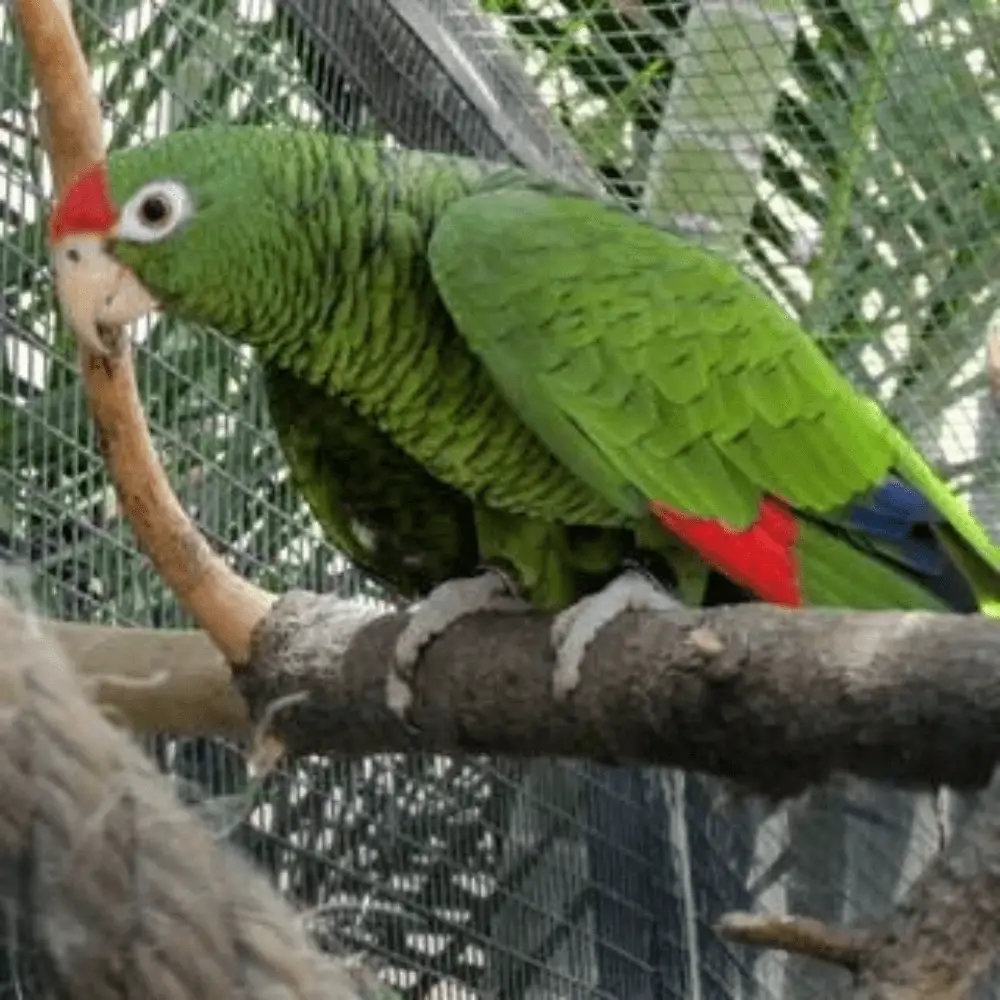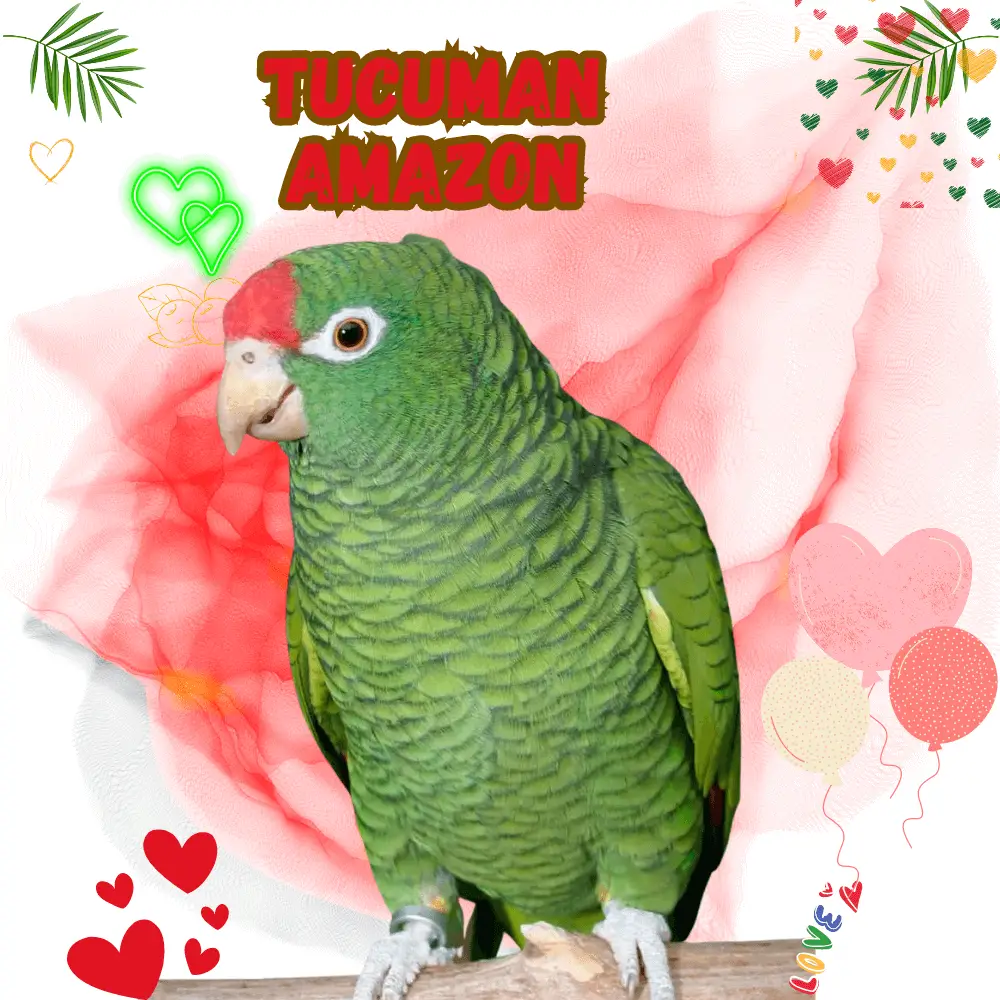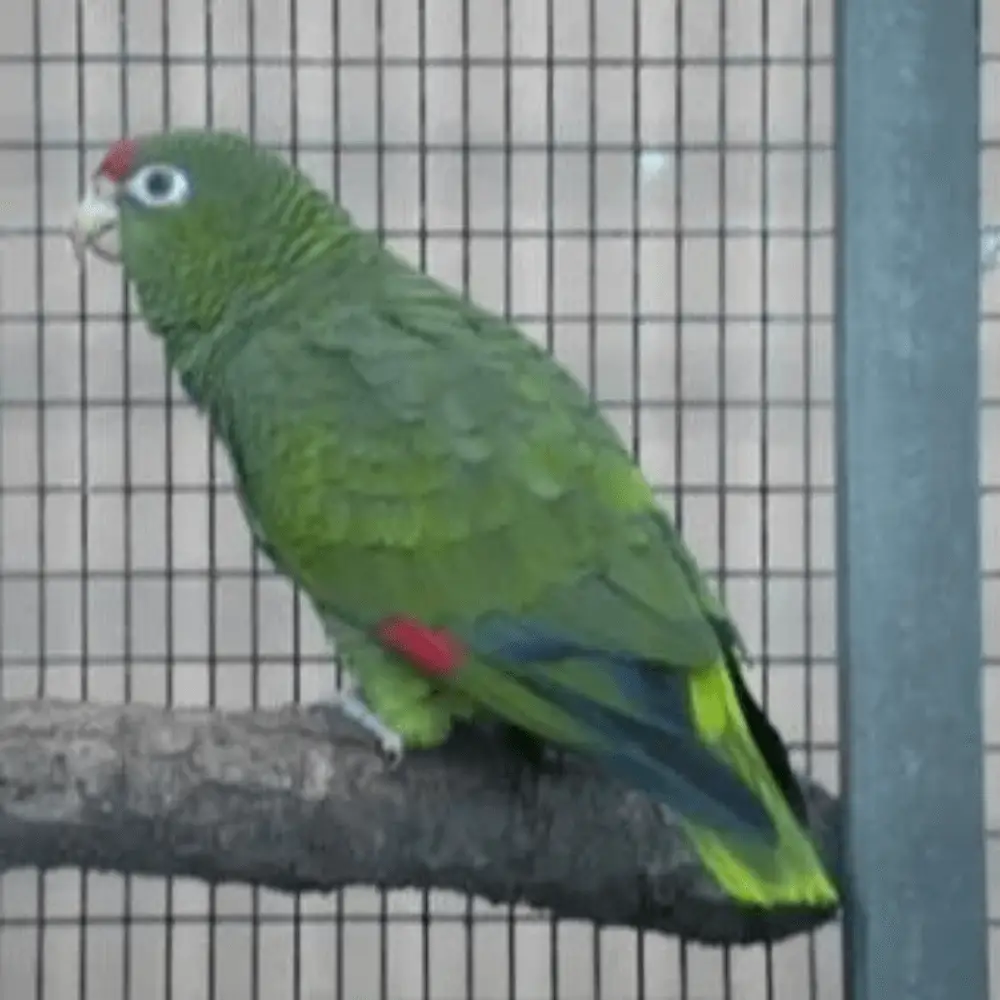Tucuman Amazon: (Amazona tucumana) It is mostly green, with black borders on the feathers , giving the whole aspecto festoneado .
Relatively tall and stocky with red foreparts and white undertones . also has Red patch in the wing covers (most notoriously in flight); fine yellow line on shoulder near half of wings ; The primary wing feathers They have blue tips, and the thighs They are yellow-orange. The tail It is short and feathered yellow.
The woodpecker It is yellowish to pinkish, and the adult eyes are yellow-orange. The legs They are pale gray.
Both the male as the female They are similar in appearance, but the immature They are generally green in full, with thighs green than orange and less red on the front . Another key difference between the adult and immature is that the young’s eyes are gray.
Until a few years ago it was considered a subspecies of the Priest’s Parrot (Amazona pretrei) ( Fjeldså and Krabbe 1990 ), but now they are recognized as separate species, although closely related to each other. to others and, In addition, with the Slaty Parrot (Amazona vinacea) , which possibly form a base group to all the other parrots of the genus ( Russello y Amato 2004 ).
- Order : Psittaciformes
- Family : Psittacidae
- Genus : Amazona
- Scientific name : Amazona tucumana
- Quote : ( Cabanis , 1885)
- Protonimo : Chysotis tucumana
-
Argentinian, Bolivia
-
Loud and shy
-
40 to 50 years
-
31cm
Habitat

It is found in the open forests of the mountain forests of the Andes Yungas , especially in the Alnus acuminata or Podocarpus parlatorei areas , along with other species of Alnus , Podocarpus and Nothofagus .
This species It is in the elevations of between 1.600 Yes 2.600 meters in the breeding season , but during the non-breeding season they descend to lower altitudes of about 350 m. At this time, sometimes you can enter populated areas.
It often gathers in large groups, often numbering more than 200 individuals.
Reproduction
The Tucuman Amazon they breed between November and January or February, usually building your nest in a hole in an Alnus or Podocarpus tree . The normal clutch size is three to four eggs, although sunsets have been reported from one to five eggs.
The incubation lasts around 26 a 29 days, it is usually the female that the male incubates and who feeds, and the main source of food for the chicks comes from seeds and Podocarpus parlatorei flowers . The young they usually leave the nest after seven to nine weeks.
Food

The Tucuman Amazon They feed on trees of the family Myrtaceae , as well as the seed Yes flower trees like Podocarpus parlatorei , Juglans australis Yes Alnus , the immature fruits of the Cedrela species and the flower Erythrina species .
Distribution and status
The Tucuman Amazon It is located in northwest Argentina and in the south Bolivia , where it is known in 12 places departments Tarija , Chuquisaca Yes Santa Cruz (A. In some MacCormick. 2005, R. In some Hoyer. A little. , 2012 ).
A recent study of the status and distribution of Argentine species recorded 6,015 individuals ( Rivera et al., 2007 ) and estimated that the Argentine population amounted to about 10,000 birds, but about 20,000 They were exported from Argentina in the mid-80s, suggesting that there may have been a major population decline .
After consideration in CITES Appendix I , international trade was cut off, although local exploitation continued . However, it does not appear that the stocks have recovered, and habitat loss is a concern, particularly in Argentina , where their habitat is very degraded and there are only a few remnants of small and isolated forests. Habitat threats are less severe in Bolivia , but the species has declined there and is expected to continue to do so ( A. Maccormick a bit., 2005 ).
The main concentrations of this species in Bolivia are in covered hills , Villa Serrano Yes Tariquía National Flora and Fauna Reserve , with 1,643 individuals recorded in several locations during a recent study ( Rivera et al., 2009 ).
Endangered

• Current IUCN Red List Category : Vulnerable .
• Demographic trend: Degressive .
• Population size: 6000-15000.
Rationale for Red List Category
This species of parrots is listed as Vulnerable because it is experiencing rapid population decline due to habitat loss and capture for the bird trade .
Population justification
A recent study of the status and distribution of species Argentina recorded 6,015 individuals and Argentina estimated that the population was around 10,000 birds ( L. Rivera in a little., 2004 ).
In addition, 1,643 individuals were recorded in several sites in Bolivia during another recent study ( Rivera et al., 2007 ). The total population is therefore in the band 10,000-19,999 individuals ( L. Rivera in a little., 2012 ).
Justification of the trend
Survey results, observations of habitat loss and local occurrence of the species, and capture and trade data suggest that the population is suffering rapid population decline ( L. rivera in some. )


